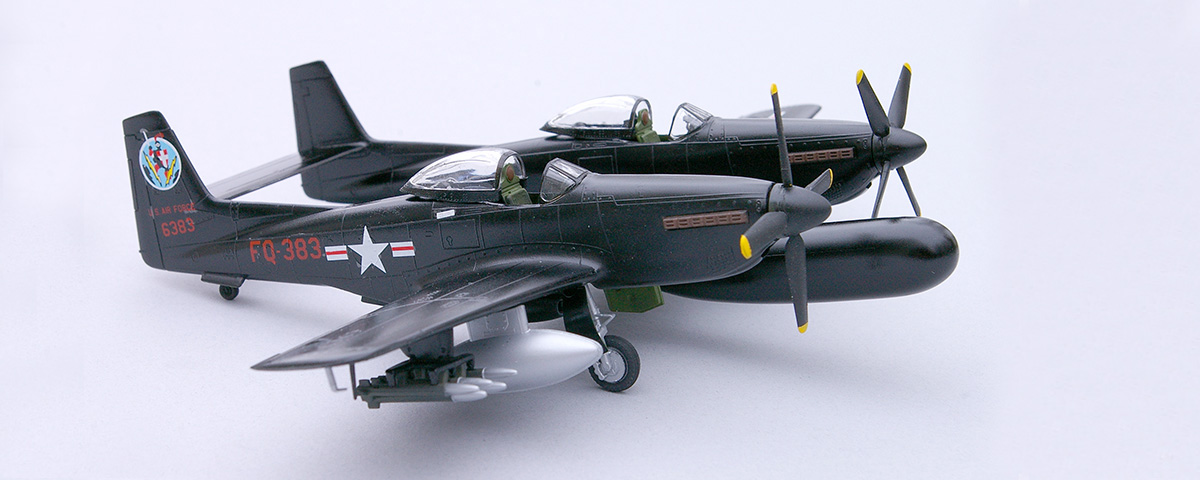In 1973 Monogram Models issued a 1/72nd-scale kit of the North American F-82G Twin Mustang. Reissued several times since then, it is currently out of production and can only be found at model club swap meets and on some hobby shop Web sites dealing in out-of-date kits. Spotted at an online shop—and purchased for only a few dollars more than its initial retail price—our kit was produced at a time when little effort was expended on interiors, so only rudimentary details are provided for the twin cockpits. The basic color is “interior green” (FS-34151), with black (FS-37031) instrument panels. A small decal is provided for the pilot’s panel and a slightly different one for the radar officer’s in the starboard fuselage.
The two cockpits are basically the same; the only difference is a tiny radio set that is glued behind the port side pilot’s headrest. Dress up the crew seats with some paper seat belts, but don’t spend too much time here since little can be seen when the fuselage sides are closed. Don’t forget to trap the tail wheels into the slots in the aft portion of the fuselage sides before gluing them together.
While the fuselages are drying, insert the six .50-caliber Browning machine gun package into the wing center section. A small access panel is provided so the gun bay can be displayed open, to show off the breeches. Cement the top and bottom outer wing sections into place, then glue the wing assembly to the fuselages. Before the glue dries, slip the horizontal stabilizer into the slots at the base of the vertical stabilizers. Make sure these pieces are aligned properly, or your model will appear off-center. The last parts to be attached, the signature Mustang intakes, fit into the underside of the fuselages.
This kit suffers from poor parts fit, with many seams requiring filling and sanding. When you are satisfied with your construction, stuff some wet tissue inside the cockpit openings and spray the model with a light coat of Tamiya’s gray primer to highlight any areas that need further attention.
While the primer is drying, assemble the long-range fuel tanks and paint them with Floquil’s “platinum mist.” You can use this same color on the landing gear legs. The F-82G was a long-range night fighter, painted overall gloss black. I used Tamiya’s acrylic black (X-1), since the finish does not result in a “shiny black” and duplicates the weathering that took place in the harsh climate of the Far East.
All F-82s were designated as escort fighters, but they carried ground attack weapons on some missions. Two 1,000-pound bombs and five high-velocity aircraft rockets are provided in the kit. The bombs are olive drab (FS-34087), and the rockets are a similar shade with silver warheads. The G model of the Twin Mustang was distinguished by its huge bulbous SCR-720C radar pod fitted to the center wing section of the aircraft. This was the same search radar that equipped the Northrop P-61 Black Widow.
The kit includes markings for a black night fighter from the 68th Fighter–All Weather Squadron, the Twin Mustang flown by pilot Lieutenant William Hudson and radar officer Lieutenant Carl Fraser when they shot down a North Korean Yak-11 near Kimpo Air Base in South Korea on June 27, 1950. That became the first confirmed kill of the Korean War.
Once you complete your F-82 Twin Mustang by attaching the landing gear, tires, gear doors and twin canopies, it will be ready for display.
Originally appeared in the September 2009 issue of Aviation History. Subscribe here!





